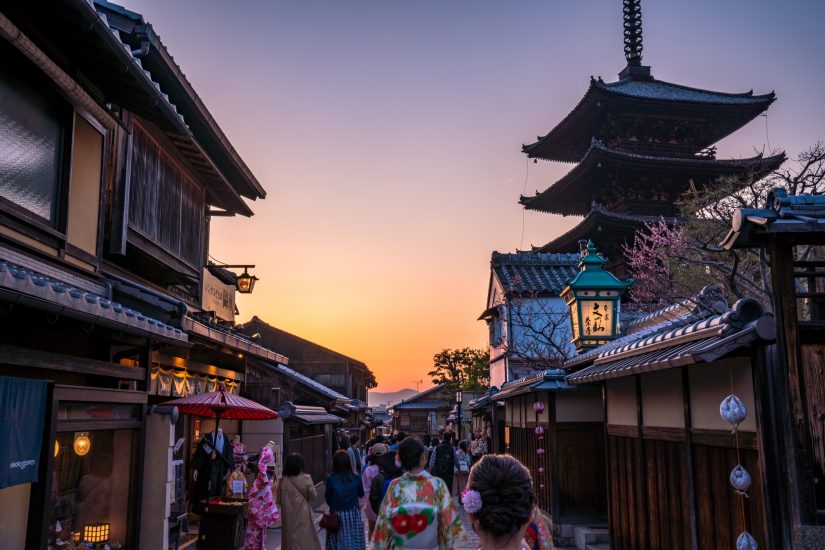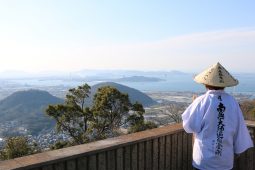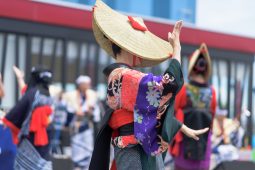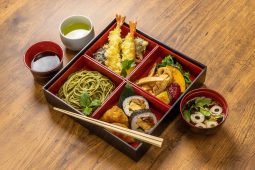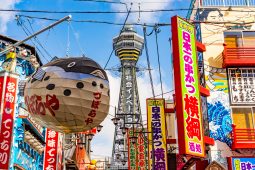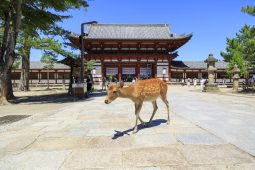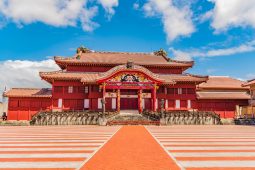The Kinki region in western Japan, which officially is defined as Hyogo, Mie, Nara, Shiga and Wakayama Prefectures plus the metropolitan prefectures of Osaka and Kyoto, was over a long period the beating, cultural and political heart of the feudal Japanese nation.
Today, the region is most often referred to as “Kansai”, and although “Kansai” and “Kinki” are officially the same area, Kansai tends to be commonly used to refer to the three major cities of Osaka, Kyoto and Kobe.
As the second most populated area of Japan, this region has as much if not more diversity in landscape and lifestyle. In addition, the cities of Osaka, Kyoto and Kobe differ considerably from Tokyo, Yokohama, Saitama, etc. in not only atmosphere, but also in cultural traits, customs and language.
Characteristics
If you were to compare general interaction of Kyoto residents with strangers to that of Osaka, you could say that Osaka is like the pushy, over-familiar but kind salesman, whereas Kyoto is outwardly amiable, but you never know what it’s really thinking. This is reflected in the respective forms of speech common to each city, one of which feels rough round the edges, the other soft and more refined. Both are categorized as Kansai-ben, but there is sometimes confusion as to what constitutes Kansai-ben because Osaka residents refer to their Kansai dialect as Osaka-ben, and many outsiders think of Osaka when they hear someone using words and expressions common to all the Kansai dialects. The last thing a Kyoto resident wants is to be associated with Osaka. Therefore, folk from Kyoto often maintain that their dialect is not “Kansai-ben”.
One well-known feature of Kyoto speech as distinguished from Osaka speech is its indirectness. As the former capital of Japan, perhaps this indirectness is something Kyoto has in common with Tokyo, or perhaps Osaka’s well-known directness is just a Japanese anomaly? Whatever the case, it has come to be characterized by an expression which means “How about having ochazuke rice soup?” (まあ、ぶぶづけでもおあがりやす 。) used to let a visitor know they’ve overstayed their welcome. On hearing this, a Kyoto native would instantly make excuses about having no time left to share some soup and needing to leave. Of course, in Tokyo, they would never have invited them to their home in the first place!
Cuisine
Whether it’s sukiyaki or rice balls, udon or soba, there are some fundamental variations between Kansai and Kanto in the name, ratio of condiments or method used to make similar or identical Japanese dishes. For Kanto-style sukiyaki, they prepare the soup base for simmering the beef slices and vegetables beforehand. In Kansai, beef and vegetables are fried in lard before the seasoning soup ingredients are added and adjusted with sake and water as you go along. Soba noodle soups are stronger, sweeter and darker in Kanto because they use a bonito stock with dark sauce, mirin and sugar, whereas in Kansai the soup is based on kelp and bonito with some light soy sauce.
Escalators
One obvious difference between Kanto and Kansai is on escalators. In Kansai, people stand on the right of the escalator and let others pass on the left, whereas Kanto people stand on the left and let others pass on the right.
Interaction
What’s considered polite in Kanto is sometimes considered standoffish in Kansai, and what’s considered normal interaction between strangers in Kansai, can sometimes be considered impolite or over-friendly in Kanto. Saying that, as mentioned above, the two cities of Osaka and Kyoto are like chalk and cheese when it comes to what’s considered polite behavior, despite their close proximity.
Dialect taster
An article such as this can only scratch the surface of the differences between Japan’s two most densely populated areas, and we would need to write an entire coursebook to thoroughly cover the grammar, vocabulary, syntax, etc. of the Kyoto and Osaka dialects alone! Therefore, I’d like to leave you with a selection of Kansai dialect words that differ from standard Japanese. Be sure to try them out!
10 Kansai dialect words that differ from standard (in brackets) Japanese
- Honma (Honto) really
- Akan (Dame) useless, no good, hopeless
- Ee (Ii) good
- Maido (domo) thank you for your continued patronage
- Ookini (arigatou) thank you (especially Kyoto)
- Nanbo? (Ikura?) how much?
- Hokasu (Suteru) throw away
- Bochi-bochi (maamaa) not bad, passable, so-so
- Nangi (Muzukashii) difficult, problematic (used to say “no”)
- Sarapin (Shinpin) New goods or product


